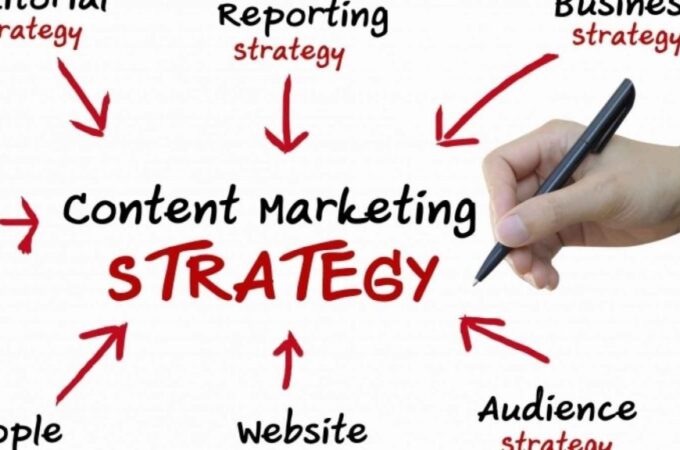
4 PR Tips to Master your Marketing Practices
The internet is a volatile creature. It changes, shifts, redirects, and can be highly temperamental. The same is to be said of society. They’re both sensitive to the world around, and the best way to master them, is with effective marketing practices that tailor to that world.
Your PR strategy should allow you to connect with and respond to your viewers, and it should allow you to turn those viewers into clients.
Your marketing should not be done blindly. You wouldn’t wander into the wilderness or out onto the road without some sort of destination in mind, and how to get there.
It should engage them regularly and entice them back to your content. You need to create something they want and need to read. It should make them trust you and come back for more.
It should be consistent, but it should also be changing to the environment and climate. Don’t focus on strategies and approaches that worked four years ago. Don’t focus on giving information that was big news two years ago.
Engaging your readers and potential clients with your marketing strategies can be simple, but effective, time consuming, but powerful. Follow these four tips while developing a marketing strategy and watch how quickly your practices improve your business.
Tip #1: Set goals and develop an endgame.
If you have no idea where you want to end up, how on earth do you plan to get there? A critical step to your marketing plans and overall company growth and progress should include goal setting.
Goals should be on a small scale as well as a large scale. Goals should be concrete, measurable goals that can be identified and understood by your team as a whole. Goals should be shared amongst a team, from the management team down.

Some goals can even be shared with customers and potential clients. Want to help them accomplish their fitness goals? That can be communicated. Want to help them sort out their financial wellbeing? That can be communicated.
When you have a clear understanding developed of what you want to accomplish, whether it be within this month, or the next year, or five years, setting and communicating those goals are crucial to the successful execution of a marketing strategy and campaign. It gives a company and its team something to aim for and something specific to accomplish.
When we consider what the statistics show with regards to the impact of setting goals, it’s easy to see why so many successful companies prioritize goal setting at the start of the year or quarter. Know where you want to be, so that you know where to start.
Tip #2: Have a plan.
Who doesn’t love it when a plan comes together? Do not let yourself start off thinking you can ‘wing it’. Your marketing needs to develop from some sort of concrete plan, but one that allows for flexibility, as well.
Especially now that you’ve followed Tip #1, you should be able to understand what, realistically, you want to accomplish and where you want to be. The question becomes, what do you need to do to get there?
If you want to increase subscriptions to a newsletter, then you need to develop actionable steps geared toward newsletter followership. Develop strong content to put out, develop a CTA that will engage viewers and encourage them to put in an email when that little bar pops up.
Add this paragraph “If you want to increase your digital presence, you need to focus on where people can find you on the internet- Google, LinkedIn, Facebook, etc. as shown excellent by Swedish start-up abono.se. According to Healthcare Weekly, this can be made even easier by having a step-by-step plan, which means you’ll be able to start on the right foot in January, accomplish tasks by February, and even see progress by March.
Tip #3: Have a clear message to give.
Whether you’re promoting a brand, a company or business, a service or a specific product, you need to establish a strong, clear message for any campaign or ad your plan to run.
You don’t want your viewers or potential customers to feel confused, uninspired, ambivalent, or careless when they come across your company’s marketing. Quite the opposite.
A successful message should make them “clicker happy” and do whatever they need to click the right links to get to your site. Make sure you know your audience, make sure you know your brand/product, and make sure you have a story.

Your marketing message shouldn’t be some throw-out slogan or dialogue, something offhand. It should be unique, original, specific, and should have its own voice. Take the time with your team to plan and develop your message, and it’ll pay off in the long run.
That message should be communicated clearly to your audience and should reflect the company or business itself.
Tip #4: Plan and develop great content.
According to Digital Authority Partners, creating quality content is creating content that sells. They note that when companies use compelling and engaging content, content that is relevant and informative, consumers are far more likely to use a product or service.
The company even declares that content marketing is their practice of choice over advertisements. When one considers that 70% of consumers will use articles to get to know a company rather than ads, this is pretty easy to understand.
We read what we want to, and we don’t read what doesn’t engage us. It’s not just what a company includes in their content, but how they tell and inform their readers.
Trust that your readers and viewers want valuable, worthwhile, and relevant information. Afford them the respect of believing they will understand what you tell them. Have faith they will take the time to read it, if you take the time to make it worth their time.
Figure out the niches, the trends, the gaps in knowledge, and then figure out how to meet those needs. Put out what people want to consume, and you’ll realize how quickly the do indeed consume it. It might even help to use analytics to gauge the effectiveness and engage of your marketing.
There can be good things and bad things about using it though, so be wary of using data to your own detriment. Know what you’re doing and what you’re reading and use it accordingly when you need to.
Final Thoughts
It may not always seem like it, but there can be quite a lot riding on your marketing practices and strategies. It’s important to do it right and to do it well. In a world where most of what we learn, we learn from the internet, companies, businesses, and brands need to put their business out their well and effectively.
This article was contributed by Julian Gnatenco @ JGBilling, a medical coding company




